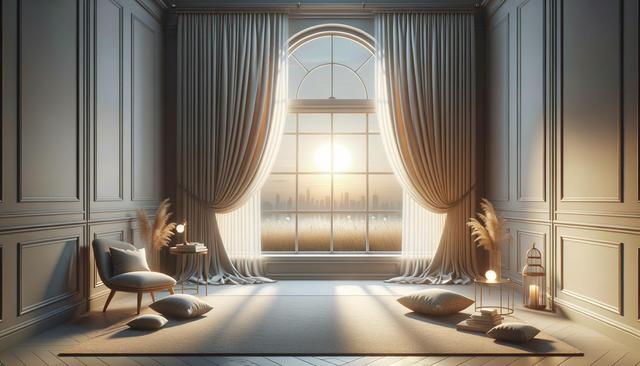Understanding the Role of Window Treatments
Window treatments are more than decorative elements; they serve vital functions in managing light, privacy, and even energy efficiency. Whether you’re working with drapes, blinds, shades, or shutters, the decisions you make can significantly affect the atmosphere of your space. Light control is one of the primary reasons homeowners invest in window treatments. Natural light can brighten a room and improve mood, but too much sunlight can lead to glare, fading furniture, and increased indoor temperatures. By choosing the right materials and styles, you can strike a balance between illumination and protection.
Privacy is another critical aspect. In urban areas or homes with close neighbors, having the ability to shield your interior from outside view is essential. Options like blackout curtains or top-down-bottom-up shades offer solutions that don’t compromise on aesthetics. The right window treatment can also improve your home’s insulation, helping to maintain a comfortable temperature year-round and potentially lowering energy costs.
Types of Window Treatments for Light Control
Different window treatment styles offer distinct advantages when it comes to controlling light. Understanding your needs will help guide your selection process. For example, if you want soft light filtering into a room, consider using sheer curtains. They diffuse sunlight while maintaining a light and airy atmosphere. On the other hand, if you need complete darkness—such as in a bedroom—blackout shades or lined draperies are a practical choice.
Some of the most effective styles for light control include:
- Roller shades: Easy to operate and available in various opacities.
- Cellular shades: Provide insulation and light filtering in one package.
- Wood or faux wood blinds: Allow precise control over the angle and amount of incoming light.
Combining different treatments, such as layering sheer curtains over blackout blinds, can offer flexibility and enhance the room’s design appeal as well.
Privacy Solutions for Every Room
Privacy needs can vary depending on the room and its location within the home. Bedrooms and bathrooms typically require more coverage, while living rooms and kitchens may benefit from treatments that offer privacy without sacrificing natural light. Window films, frosted glass, and top-down-bottom-up shades are popular solutions that allow light in while obscuring visibility from outside.
Some smart techniques for enhancing privacy include:
- Using Roman shades with a blackout lining in bedrooms.
- Installing cafe curtains in kitchens for partial coverage.
- Choosing patterned or textured fabrics that obscure views without darkening the room.
Smart window treatments with motorized controls also offer customizable privacy settings throughout the day, especially useful in multi-story homes where manual adjustments are less convenient.
Balancing Style and Functionality
While function is important, window treatments also contribute significantly to a room’s style. The color, texture, and pattern of your window coverings should complement your existing decor while serving your light and privacy needs. For a minimalist aesthetic, consider neutral tones and sleek roller shades. For a more dramatic or traditional look, heavy draperies with decorative hardware may be more suitable.
When selecting materials, it’s essential to think about their durability and maintenance. For example, fabrics in humid areas like bathrooms and kitchens should be moisture-resistant and easy to clean. In high-traffic rooms, opt for materials that are less prone to wear and tear. Choosing versatile treatments that can be adjusted or layered allows you to adapt the space for different times of day or seasons.
Customizing Window Treatments for Your Space
No two rooms are exactly alike, so window treatments should ideally be tailored to fit your specific needs. Custom-made options ensure a perfect fit and offer a broader range of fabrics, finishes, and functionalities. Whether you’re dealing with oddly shaped windows, large panes, or a specific design vision, customization provides the flexibility needed to get the right solution.
Key considerations for customizing include:
- Window size and orientation
- Desired level of light and privacy
- Color coordination with walls and furniture
- Ease of operation and maintenance
Working with a professional or using online configuration tools can help you visualize how different treatments will look and perform in your home. Ultimately, the investment in custom window treatments can enhance both the comfort and value of your living space.
Conclusion: Making the Right Choice
Choosing the appropriate window treatment is a decision that blends practical needs with personal style. Whether you’re aiming to control sunlight, increase privacy, or elevate your interior design, there are numerous options available to suit your goals. By focusing on the unique requirements of each room and considering factors like material, functionality, and aesthetics, you can find solutions that enhance your home in meaningful ways. Thoughtfully selected window treatments not only improve daily comfort but also contribute to a cohesive and inviting living environment.




Leave a Reply